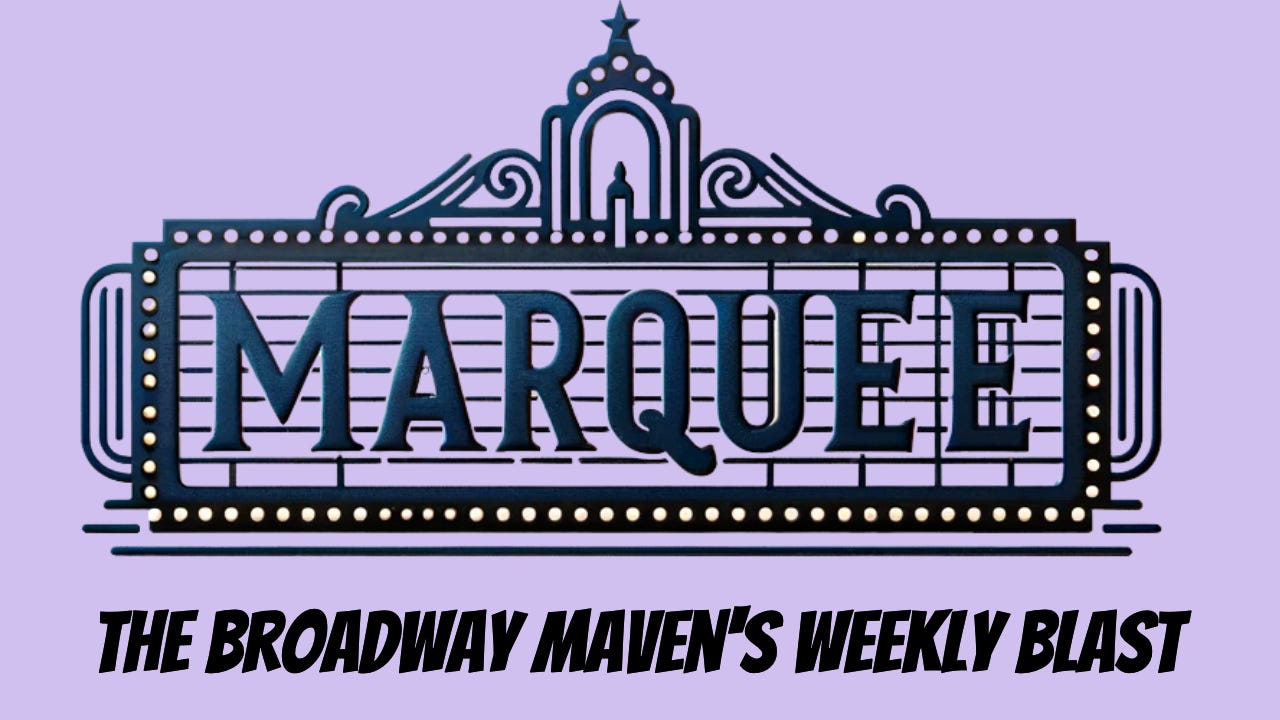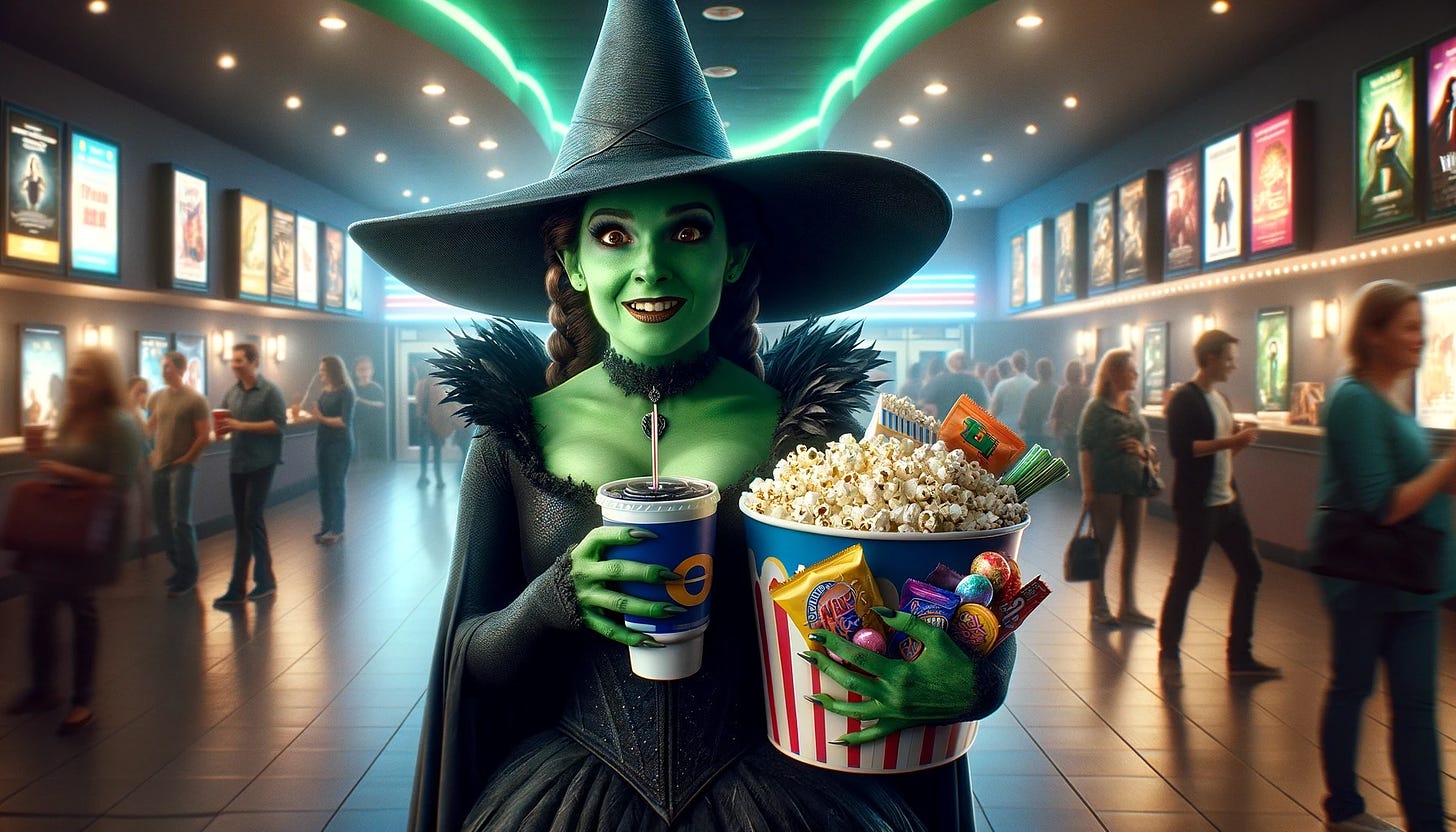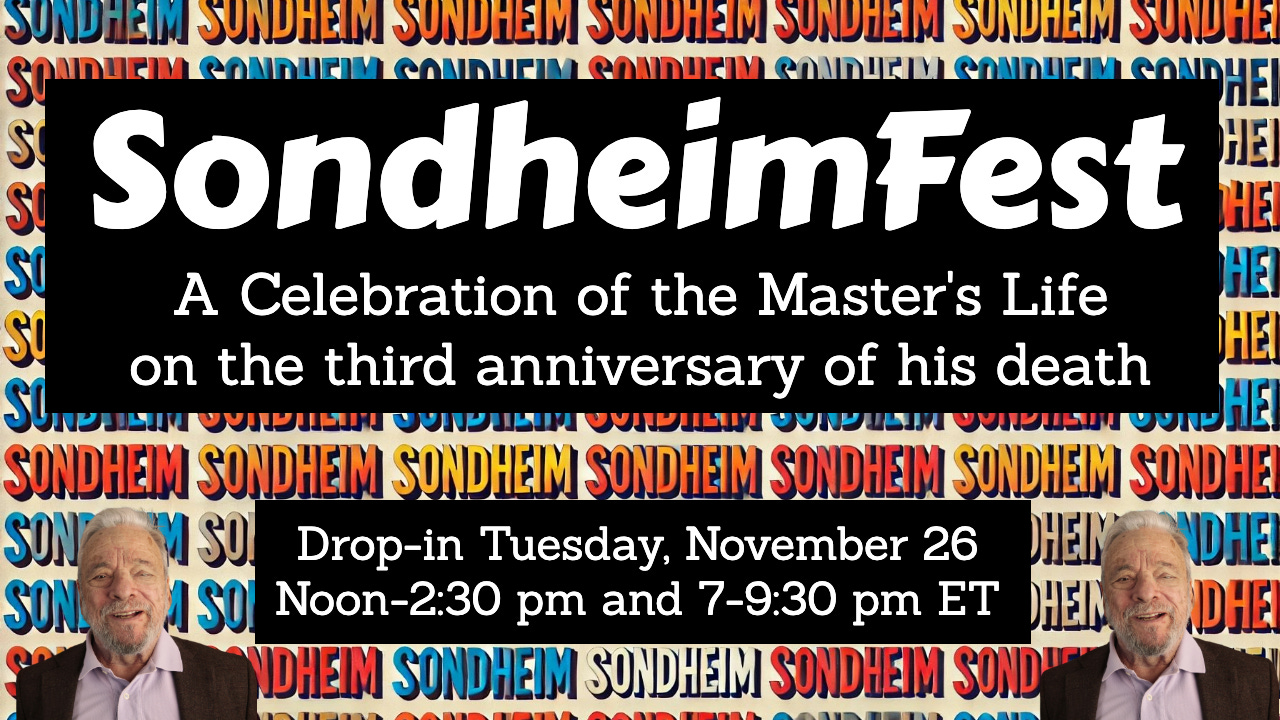Finding Hidden Emeralds in the Wicked Movie (Spoilers!)
Eight gems from an Easter Egg hunt within Friday's magical release
Shalom, Broadway lovers!
In today’s MARQUEE: The Broadway Maven’s Weekly Blast: A) an essay (spoilers ahead!) about Easter Eggs in the Wicked movie; B) a student review of a book about Carousel; C) a Broadway Maven video putting Hamilton in the context of the genre of rap; D) a Broadway Blast about Beauty and the Beast; E) a quiz about the first lines of opening numbers; and F) a Last Blast about The Wiz.
NOTE: MARQUEE is marking Thanksgiving by taking next Thursday off.
ANNOUNCEMENT: MARQUEE is now a FREE publication, with the full version available to everyone. And the ALL-ACCESS Pass program is being phased out, with current Passes expiring December 31. Anyone else who'd like to attend all the Broadway Maven classes (such as the upcoming “Sondheim Bit by Bit” and A Chorus Line) can become a Member for just $18 a month, which provides access to 5-15 classes and expert-let Broadway experiences. It includes a password to the Clips Archive and periodic giveaways to Broadway and off-Broadway shows, including at least one opening night performance and party. Join this vibrant learning community at the button below, and through December 31 only we’re offering non-Members one month’s FREE membership (cancel at any time).
ESSAY: Don't be green with envy! I got to see the first Wicked film twice the day before its Friday debut, thanks to its early release in Israel. Here are eight Easter Eggs worthy of note (spoilers aplenty ahead):
• A bit of sly wordplay that's easy to miss: Professor Dillamond (an anthropomorphic goat) tells Elphaba that in hard times "people start looking for..." and Elphaba fills in the end of his sentence "someone to blame," thus sparing his feelings, since the appropriate term is "a scapegoat."
• Elphaba and Fiyero carry the lion cub away in a bike with a basket -- just like Miss Gulch and Toto in The Wizard of Oz.
• Boq's ultimate identity as the Tin Man is hinted at in his last name -- Woodsman -- and his assertion that "I cry a lot." Dorothy's metallic friend rusted from a surfeit of tears.
• Glinda is the character who chooses yellow for Oz's brick road, which is apt since in the 1939 movie she's the character who tells the gang to "Follow the yellow brick road."
• We find out why the Wizard (and his Land) is called Oz. There's a sign in the palace that reads, "Magnificent Oscar Diggs." Oz is a logical nickname for Oscar.
• When Elphaba puts a classroom to sleep with poison poppies, only Fiyero is unaffected, though it's not explained why. The romantic hero (who sings of being "brainless" and "thoughtless") turns out later in the story to become the Scarecrow, who is one of the characters not affected by the poison poppies in the Oz story. Is the film suggesting there's already metaphorical straw between Fiyero's ears? Perhaps.
• We learn that Emerald City is not the only gem-oriented town in Oz. A poster for "Sapphire City" is one of the first images in the film. Since creators Stephen Schwartz and Winnie Holzman have hinted at further sequels beyond next year's part two, maybe we'll learn more about Sapphire City eventually.
• We get a hint that The Wizard doesn't know actual magic when the first thing he does upon meeting Elphaba is a sleight-of-hand trick of finding a coin behind her ear. We also hear him pronounce supposed spells out of the Grimmerie, but he's really just repeating the word "Omaha," which is the town in Nebraska that he's from.
By embedding so many thoughtful references, Wicked cements itself as a love letter to fans of The Wizard of Oz. These details not only enrich the viewing experience but also reward those who look closely, proving that even a world as well-trodden as Oz can still offer surprises.
STUDENT REVIEW: Round in Circles is a fantastic book about, but not limited to, Carousel by Rodgers and Hammerstein. Author Barry Kester takes the reader through the initial idea for (and initial rejection of) the musical and follows the pair’s history, from its initial major success with Oklahoma! up to Carousel's contemporary revivals. He shares a myriad of engaging archival stories about the circumstances leading to its development and expertly weaves together extracts from books, biographies, and interviews to make what is essentially an academic work accessible and engaging.
This feat is especially commendable in Kester’s analyses of Rodgers’ music, where he is able to share the wonderful complexity of the score even with non-musicians. For instance, he proposes a powerful metaphor hidden in the structure of “If I Loved You” and symbolism for contrasting musical notations in “You’re a Queer One, Julie Jordan.”
Even for readers who are not obsessed with Carousel, Round in Circles is filled with insights into bringing musicals to life during the Golden Age; engrossing accounts of the various creative figures involved; and unexpectedly hilarious anecdotes peppered throughout the book. I appreciate the joyful reverence with which Kester treats every chapter and the care he takes with subjects often dwarfed by the powerhouse pairing that is Rodgers and Hammerstein. I also learned a lot I didn’t realize I didn’t know about the team's previous partnerships and careers, especially regarding Rodgers and Hart. Kester's book curates the kinds of tidbits of information I love and conglomerated them into an exceptional book.
-Ella Shaul, Maven Scholar Spring 2024
BROADWAY MAVEN YouTube GEM: How does a musical, stage show, son of a genre...? In this video, "Broadway, Rap, and Broadway Rap," Mateo Chavez Lewis puts Hamilton in the context of the rap musical genre. He argues that you can't talk about the music of Hamilton at a deep level without understanding how storytelling works in rap music. He uses the rap album "To Pimp a Butterfly" by Kendrick Lamar to demonstrate the background of the musical style in Lin-Manuel Miranda's 21st century classic. Like Miranda, he won a Pulitzer Prize, and this album came out at roughly the same time as Hamilton. And all musical theater structures (opening numbers, "I Want" songs, Act One finales, 11 o'clock numbers, etc.) are on Lamar's album!
BROADWAY BLAST: In Beauty and the Beast, each of the three main enchanted objects embodies a function that parallels the fleeting nature of time, much like the rose. Tea must be drunk while it’s hot, and Mrs. Potts, as a teakettle, represents the urgency of savoring something before it cools—mirroring the rose’s petals, which fall one by one as time runs out. Lumière, with his flickering flame, symbolizes a wick or fuse, both common images for time running out, burning closer to the end with each moment. And, of course, Cogsworth the clock represents time itself, embodying the looming threat faced by the entire castle and its inhabitants as the rose’s petals fall, drawing them closer to a permanent enchanted existence.
QUIZ: The first line of the opening number from each of these four Broadway shows has something in common with the others. What is it?
CATS, Dear Evan Hansen, Chicago, Hamilton
Answer at the end of the issue, beneath the LAST BLAST.
ANNOUNCEMENT: Love The Broadway Maven? Want to contribute more? Join the team at The Broadway Maven! We're looking for an additional co-host to help assist the instructors on an occasional basis. Applicants should be familiar with Zoom and related technology and have good communication, organization, and problem-solving skills. This is a paid opportunity. To apply, contact BenkofStaff@gmail.com.
There are still slots available in Sunday’s class on Act Two of Hamilton. The FREE class meets Sunday, November 24 at Noon and 7 pm ET.
And…
Join us for SondheimFest, a heartfelt drop-in memory room honoring the life and legacy of Stephen Sondheim on the third anniversary of his passing. Hosted by the Broadway Maven educational community, this special event is your chance to celebrate one of Broadway’s greatest icons alongside fellow Sondheim lovers.
📅 When: Tuesday, November 26
🕛 Times: Noon–2:30 PM ET & 7–9:30 PM ET
📍 Where: Zoom (register to receive the link)
Drop in whenever you can during the event and stay as long as you like. Together, we’ll share memories, reflect on Sondheim’s brilliance, and explore his unmatched contributions to musical theater.
Note: A full calendar of upcoming classes is always available at TheBroadwayMaven.com.
• Sunday, November 24 Noon and 7 pm ET The music of Hamilton Act Two (FREE, register here)
• Monday, November 25 Noon ET “Transition: Broadway's surprising history between Oklahoma! and Carousel“ with Broadway Nation host Prof. David Armstrong (Members only)
• Tuesday, November 26 Noon to 2:30 pm ET SondheimFest part one (FREE, Register here)
• Tuesday, November 26 7 to 9:30 pm ET SondheimFest part two (FREE, Register here)
• Monday, December 2 Noon and 7 pm ET A Chorus Line part one (FREE, Registration opens soon)
• Tuesday, December 3 Noon ET Sondheim: Bit by Bit part one (Members only)
• Monday, December 9 Noon ET A Chorus Line part two (Members only)
• Tuesday, December 10 Noon ET Sondheim: Bit by Bit part two (Members only)
• Sunday, December 15 Noon ET “Careful the Things You Say”: Broadway’s Great Jewish Lyricists (Members only)
• Monday, December 16 Noon ET A Chorus Line part three (Members only)
• Tuesday, December 17 Noon ET Sondheim: Bit by Bit part three (Members only)
NOTE: As always, Broadway Maven Members and ALL-ACCESS Passholders (through December 31) do not have to sign up or pay for anything. Just show up!
LAST BLAST: In The Wiz, the reimagined African-American adaptation of The Wizard of Oz, the song "Ease On Down the Road" replaces "Follow the Yellow Brick Road." This isn't just a lyrical update; it's a cultural shift. "Ease on down" implies a more relaxed, rhythmic journey, echoing the influences of soul and R&B music. The word "ease" suggests overcoming obstacles with grace and resilience, reflecting the characters' navigation through life's challenges. This linguistic transformation adds depth, infusing the classic tale with themes of empowerment and self-discovery rooted in Black cultural experience.
The Broadway Maven is a vibrant educational community that helps its members think more deeply about musical theater. Every month, members may attend 5-15 expert-led classes and innovative Broadway experiences, all for just $18. We also foster enthusiasm for Broadway through the FREE weekly substack newsletter MARQUEE and host an expansive YouTube channel. It's your home for Broadway appreciation. Contact The Broadway Maven at DavidBenkof@gmail.com.









Thank you so much for sharing!